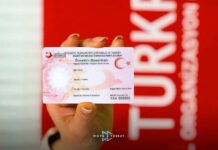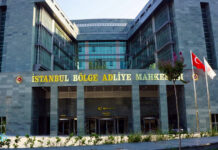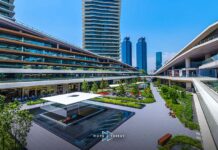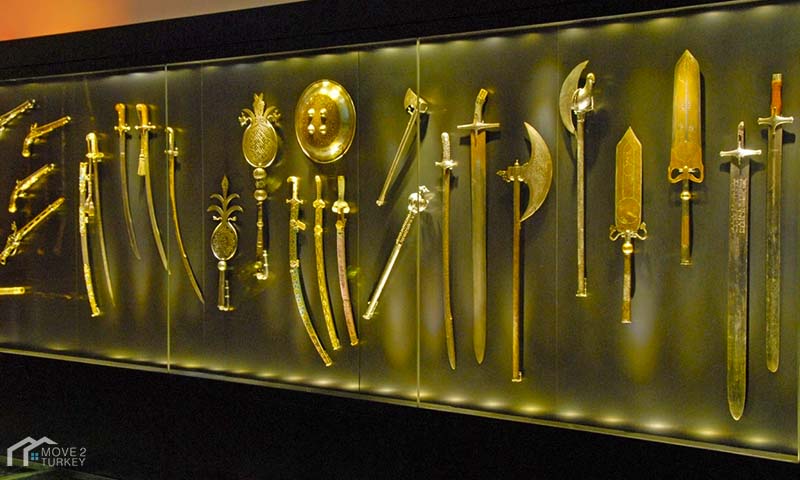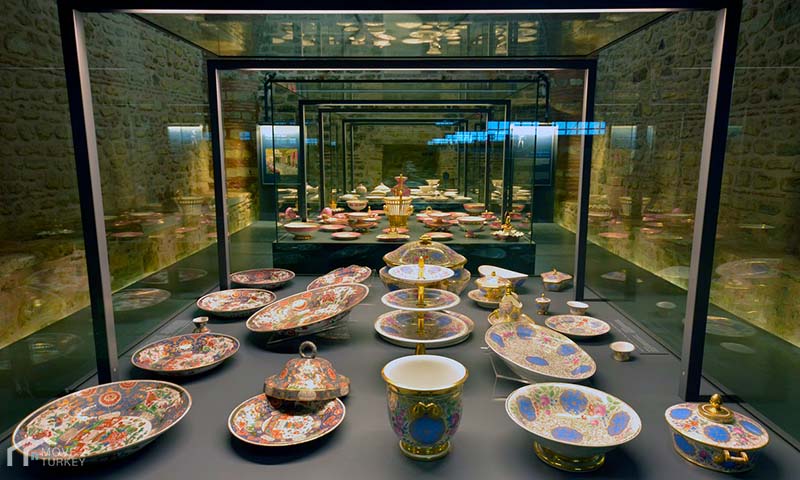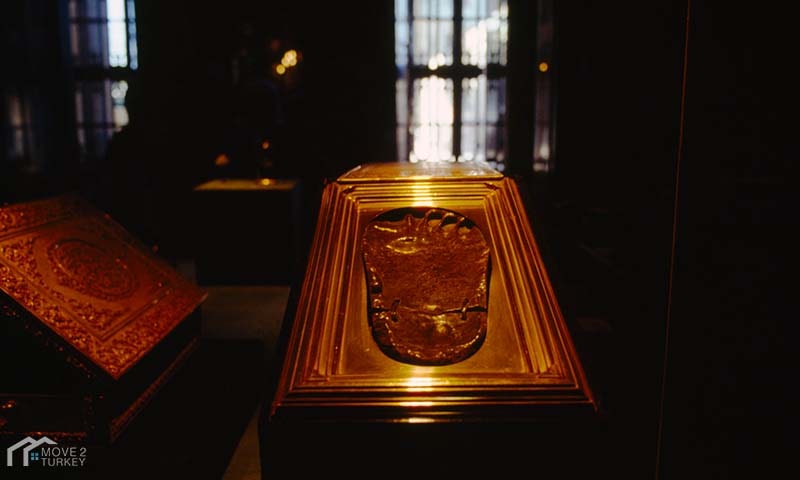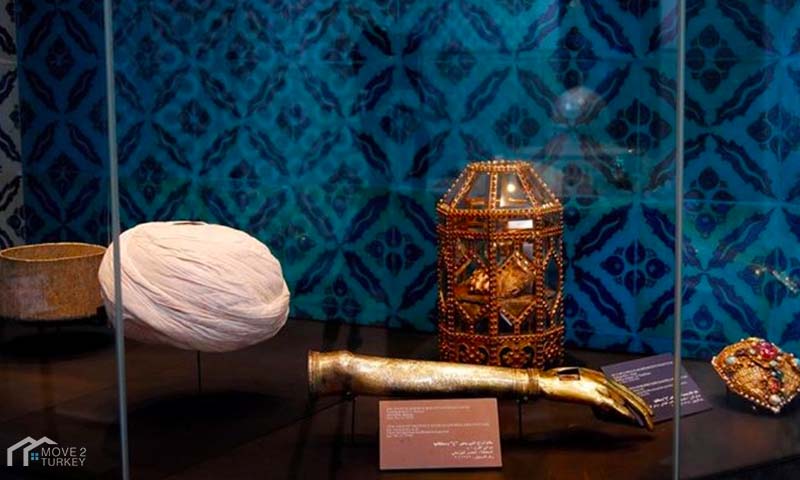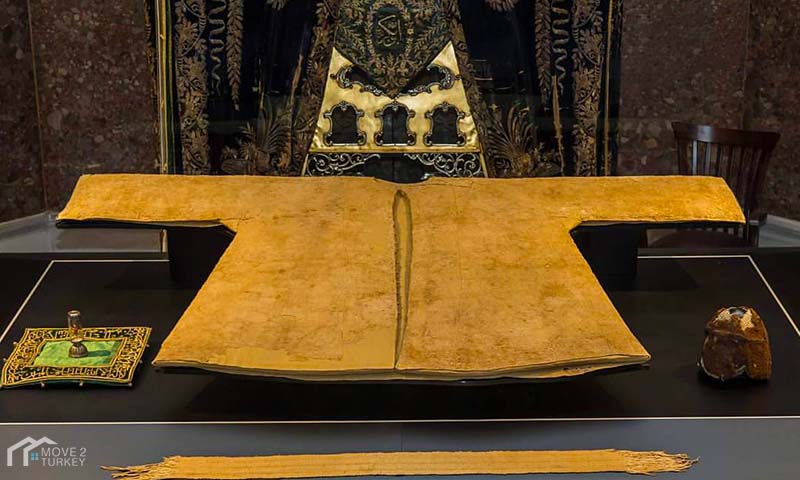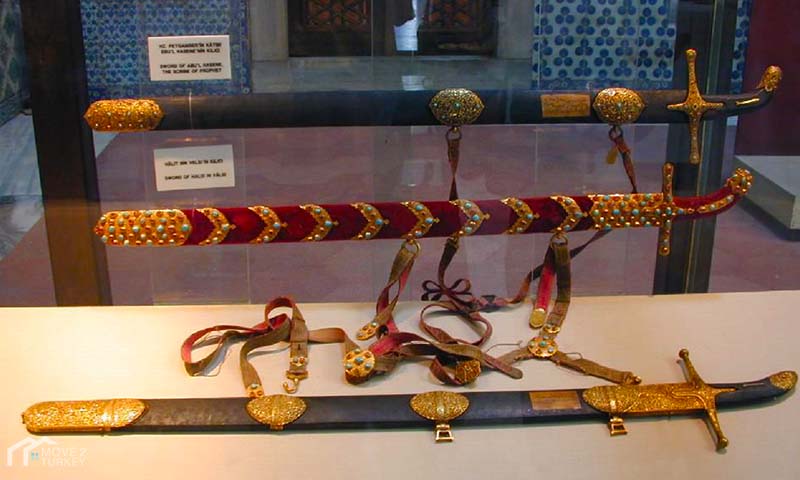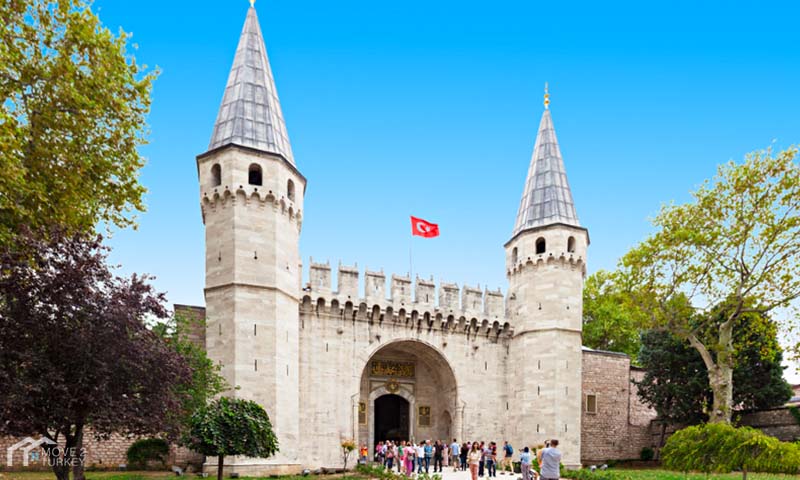
Topkapi Palace in Istanbul is a UNESCO World Heritage site and has long been a political and symbolic center of the Ottoman Empire.
The palace and museum are located on a picturesque hill in the middle of the European section in Istanbul. In the fifteenth century it was considered the headquarters and main center of the government of the Ottoman Empire.
The construction of Topkapi Palace began in 1459 by orders of Sultan Mehmed II (Mehmed the Conqueror) and was first called the “new palace” so as not to be confused with the “old palace” in Beyazit Square.
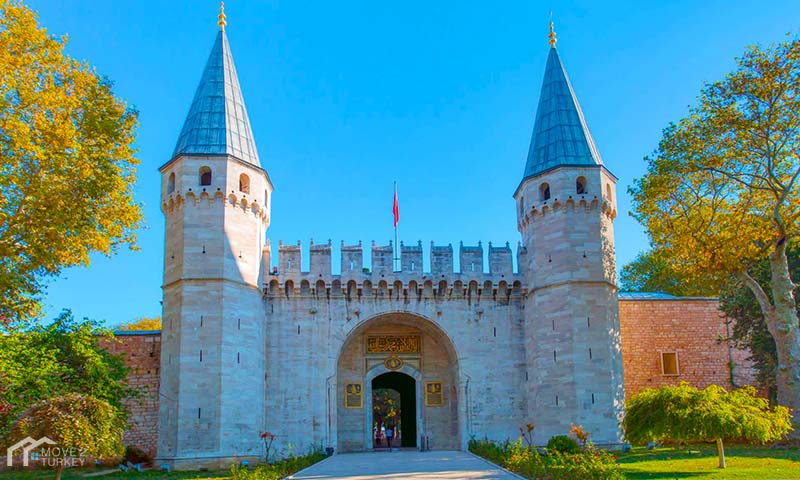
Topkapi Palace in Istanbul
Topkapi Palace in Istanbul was the residence of the Ottoman Sultans and Saints and the Ottoman Court members, in addition to being the center of government administration.
The construction of Topkapi Palace began in 1459 and was completed in 1478. It is in fact the second Ottoman palace to be built in Istanbul. The palace was the home of the Ottoman Sultans for four centuries and 25 Ottoman Sultan lived in it, from Sultan Mehmed II to Sultan Abdul Malik, all of whom lived in Topkapi Palace.
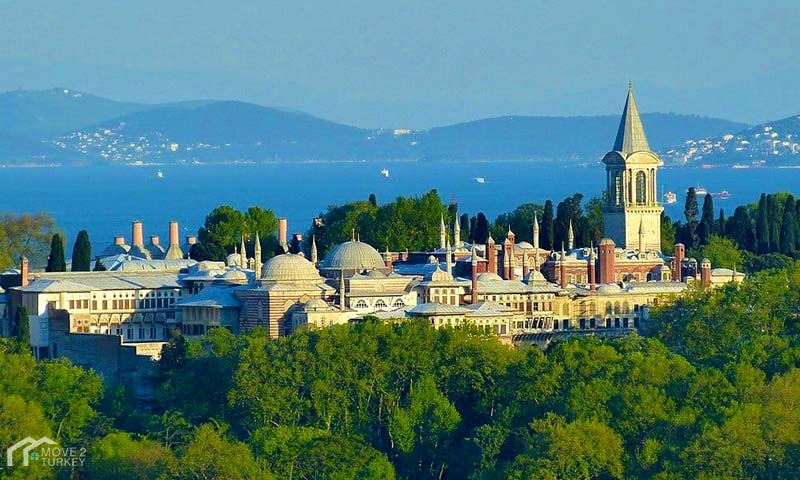
Each Sultan who came to the throne added a section with the different architecture and design in the palace, and the palace was expanded several times throughout history, and it was widely rebuilt, especially after the 1509 earthquake and the 1665 big fire.
Topkapi Palace houses four main courtyards and many small buildings, each with its own entrance gate.
By visiting Topkapi Palace, you will actually see 4 centuries of architecture, because every corner of this palace represents architecture for a certain period and has been rebuilt and expanded over the centuries.
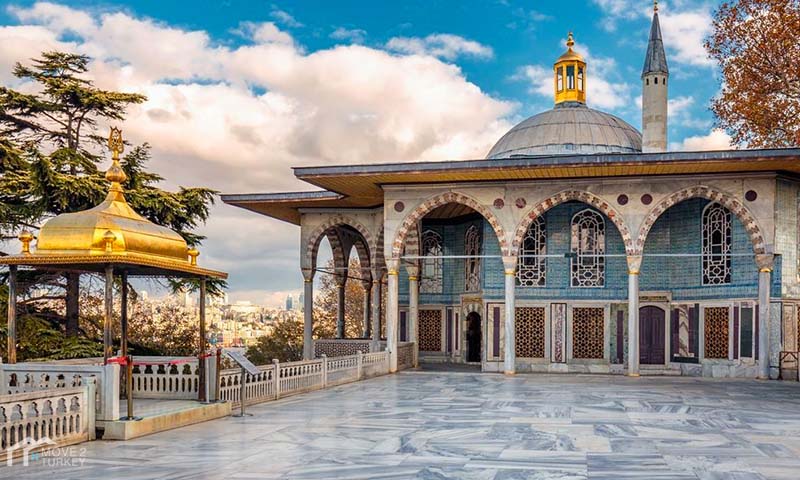
Topkapi has lost its importance since the seventeenth century, as the Ottoman sultans wanted to spend more time in the newer palaces on the Bosphorus. In the end, Sultan Abdulmejid I decided to move the center of the government to the newly built Dolmabahce Palace. Of course, Topkapi Palace was still used as a royal locker and library, and in 1924 the palace was converted into a museum.
Parts of Topkapi Palace, Istanbul
Topkapi Palace contains hundreds of rooms, but tourists can only visit the most important ones. The Palace Museum displays a collection of weapons, ancient clothing, Ottoman paintings, and Islamic calligraphy, including one of the oldest Quranic manuscripts.
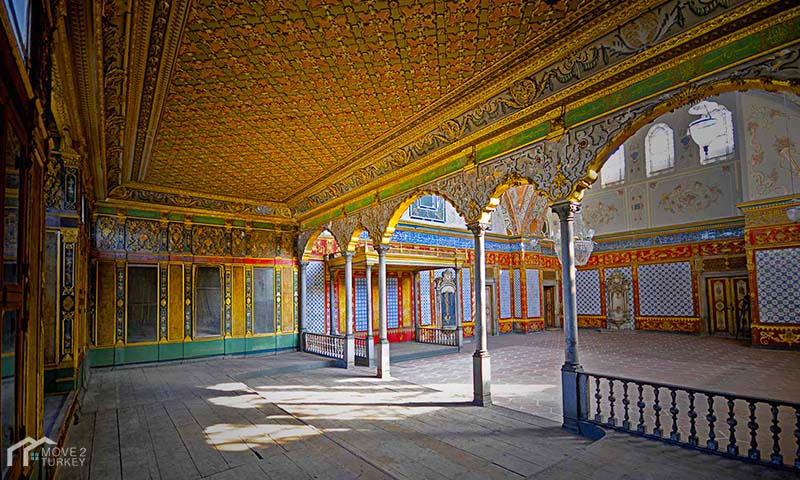
The palace is also one of the most visited areas in Istanbul and is visited by about 3 million people annually. Due to its importance and great touristic and archaeological value in Istanbul.
The high-quality “Iznik” marble tiles can be seen in the Haramlik section of the palace, where the Sultan’s wife and mother lived. Another piece of art we suggest you not to miss is Spoonmaker’s Diamond. It is an 86-carat diamond in the Royal Treasury Gallery, and there is a wide variety of stories about its origins. Some say that the fishermen found diamonds off the coast, and did not realize its value, they went to a jewelry store and sold it for a cheap price of three tablespoons. For this reason it was called with this name, and after that the Minister of the Court bought it on behalf of the sultan.
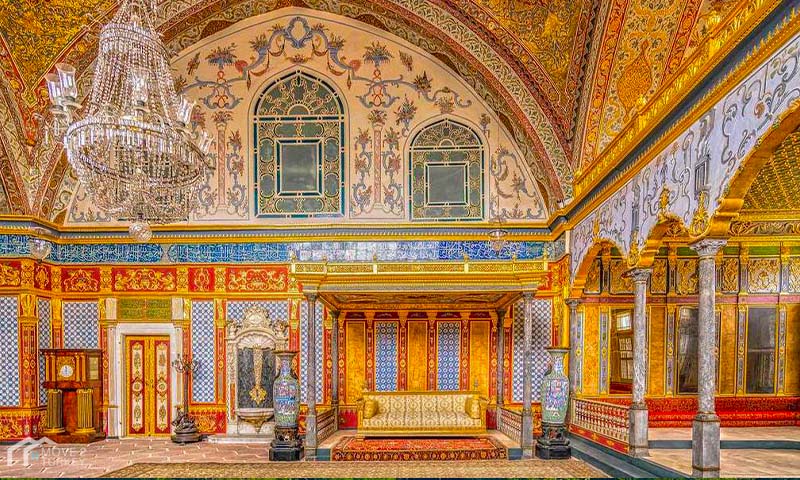
But others say that the spoon maker actually found the diamond, and others believe that the name of this diamond is derived from its similarity to the surface of the spoon.
The Sultan Ahmed III Library is located in the middle of the palace’s third courtyard and is a beautiful example of Ottoman architecture in the eighteenth century.
The exterior of the building is made of marble, which resembles the Greek cross, and from the inside, the walls above the windows are decorated with tiles of Iznik marble from the sixteenth and seventeenth centuries.
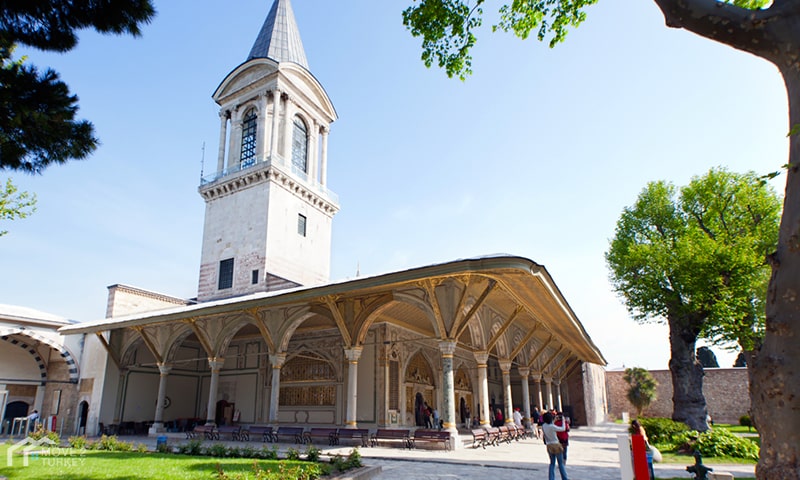
Once you enter the palace, you will see the first beautiful imperial gate of the Sultan Ahmed III in the backyard.
The palace was divided into four main sections:
- The main patio.
- Other structures.
- Hermelk, where females lived from the Sultan’s family.
- The Imperial Council building, where meetings were held between important government officials.
Unlike the European palaces, where only a large building was built in the middle of the garden, Topkapi Palace was not the only royal palace, and included a group of halls, barracks, kitchens, kiosks, sleeping areas and rooms in the central courtyard. The Ottoman Topkapi Palace was built in a simple, humble manner and at the same time in a practical way.

The courtyard of the palace was open to the public, and it included a hospital, bakery, ammunition depot, storage warehouses and some dormitory rooms.
The second courtyard, also known as the courthouse, was the area of the court (the imperial council) and was open to anyone with work with the court.
The second courtyard, courthouse, was in fact the administrative center of the empire. In addition to the court, the monastery and kitchen are located in the second courtyard.

This courtyard contains two watchtowers known as the Peace Gate, and the reason for this is that everyone who entered this place had to send greetings to the Sultan before entering, and only the Sultan himself and his crew had the right to enter this courtyard.
The third courtyard is known as the happiness yard, and the reason for this is that the Sultan and the people of the palace celebrated great events in this place.
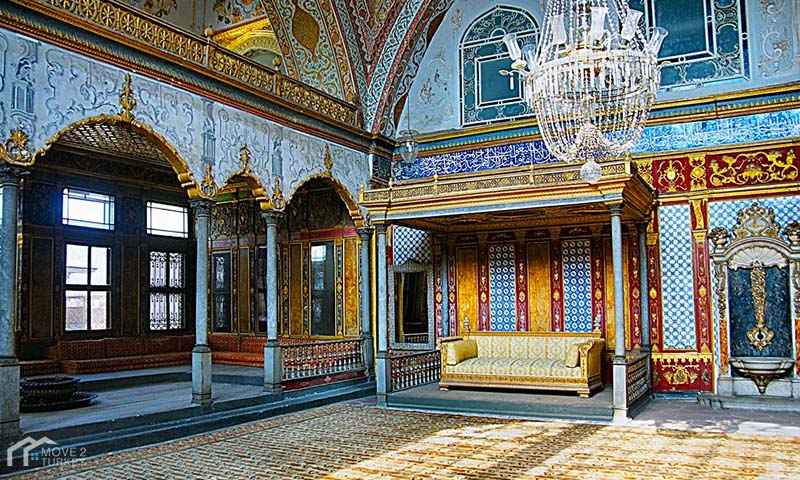
Topkapi Palace Library in Istanbul
The Palace Library is unique and a beautiful example of 18th-century art. The shelves are designed with spiral circles, the books are stamped with the seal of Sultan Ahmed III, and the windows are made of elephant ivory. The number of books is about 18,000 books.
There is no doubt that this library is the richest and most expensive collection of manuscripts, miniatures, paintings and Islamic designs in the world, especially in the Islamic world, and includes books from all over the world, including the Timorese in the thirteenth and fourteenth centuries.
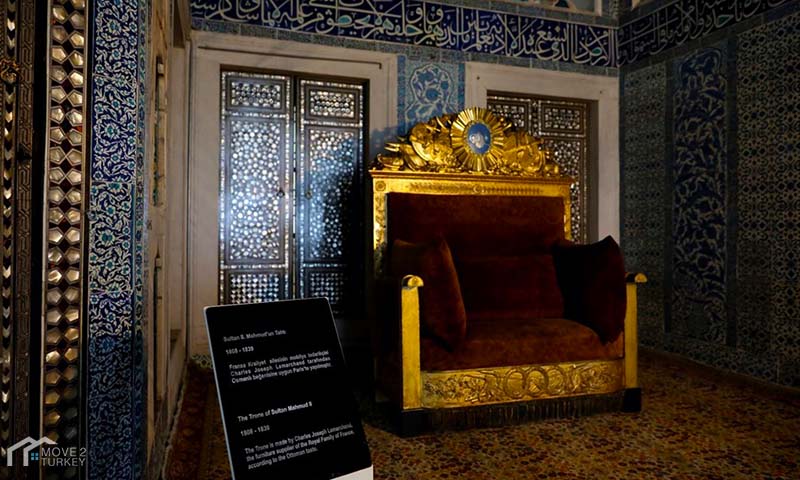
There are also 21,000 foreign books from non-Islamic sources, in addition to 600 beautiful antique manuscripts.
Topkapi Palace Museum in Istanbul
Topkapi Palace Museum contains more than 86,000 valuable important and high quality artifacts. This museum contains beautiful and valuable works and collections in various fields, and it is interesting for anyone around the world.
Although they contain beautiful collections of jewels, watches, clothes, and the beautiful relics of emperors and sultans, the museum mostly known among Muslims for possession of properties of the prophets, especially some of the property of the Holy Prophet Muhammed, and his senior companions, which are preserved in the sacred box section.

Making the museum to be considered as the most important Islamic museum in the world.
Some of the important things are in Topkapi Palace Museum in Istanbul
- The throne and dagger of Nader Shah.
- Manuscript of the Prophet Muhammed (PBUH).
- Kaaba curtains, golden key and Kaaba lock
- The oldest swords, including the swords of the Prophet Muhammed, Imam Ali, Abu Bakr Al-Siddiq, Jaafar Al-Tayyar, Hamza the Uncle of the Prophet, Othman bin Affan, Omar bin Al-Khattab.
- The property of the Ottoman Sultans and the gifts of other emperors of the world.
- All property of the Ottoman Sultans clothes, war gowns, swords, crowns…
- The shield of the hand of the Prophet Yahya, obtained during the extraction of his grave.
- The turban of the Prophet Joseph.
- A leather Quranic manuscript.
- The clothes of Fatima Al Zahra, daughter of the Holy Prophet.
- The famous sword of Ali bin Abi Talib (PBUH): The name of the sword is Zulfiqar, and it contains Quranic verses engraved on it.
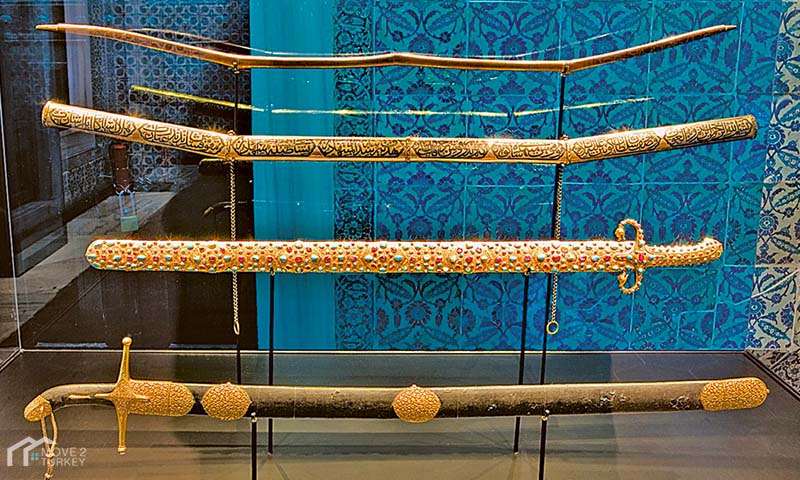
The history of Topkapi Palace in Istanbul in brief
- Topkapi was the first Ottoman palace built by the Ottoman Empire in 1459 after the Ottoman Empire invaded Istanbul.
- From 1465 CE until 1856 CE, the palace was the administrative center of the Ottoman Empire.
- The palace has been one of the main dwellings of the Ottoman Sultans in Istanbul about 400 years ago.
- The palace inhabited 25 different Ottoman sultans for over four centuries.
- Topkapi Palace was a small town in the true sense of the word, with a population of about 5,000 people, covering an area of 70 hectares.
- Topkapi Palace and Museum was included in the World Heritage List in 1985 by UNESCO as the best example of architecture during the Ottoman Empire.
- Construction of the palace began in 1459 and was completed in 1478.
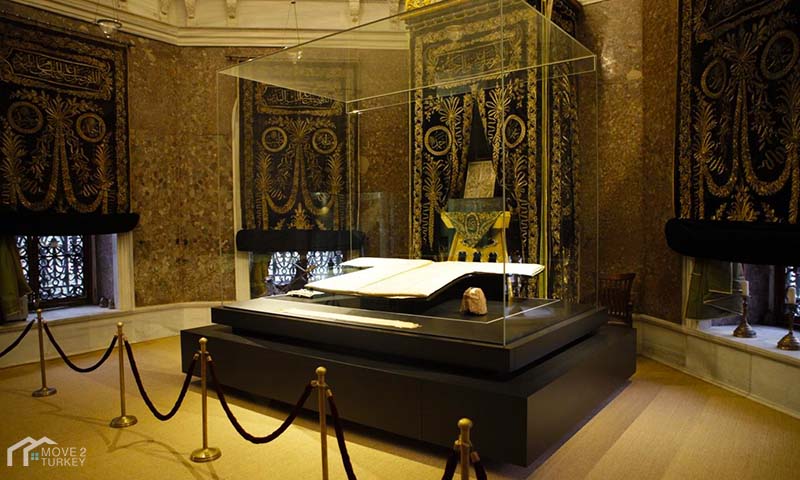
The name Topkapi Palace in Istanbul
Topkapi Palace was first named Yeni Sarai (the new palace), but its name was changed to Topkapi in the nineteenth century.
The address of Topkapi Palace in Istanbul
Cankurtaran Mh, 34122 Fatih / Istanbul, Turkey
Visiting hours and rules in Topkapi Palace in Istanbul
During your trip to Turkey, you can visit this wonderful palace every day in the fall and winter from 9 am to 5 pm and in the spring and summer from 9 am to 7 pm, except for Tuesday.
It should be noted that the museum is also closed to the public on religious holidays.
- It is forbidden to enter the religious monuments and sacred places in the palace for people dressed in inappropriate clothes (miniskirts, open summer shirts, etc.).
- Photography is prohibited in the palace.
- The use of baby carriage is not permitted.
How to go to Topkapi Palace in Istanbul?
Tourists can easily reach the palace through public transportation in Istanbul, such as buses, Istanbul Metro and tram line.
The ticket price
Currently, the ticket price for visiting this palace is 65 TL for adults.
Great places near Topkapi Palace
Hagia Sophia Mosque and Museum
Sultan Ahmed Mosque (Blue Mosque)










